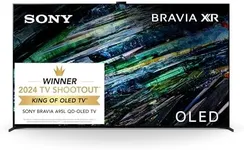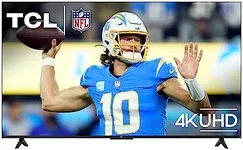Buying Guide for the Best 55-Inch TVs
Choosing a 55-inch TV is a great way to enjoy a cinematic experience at home without overwhelming your living space. When shopping for a TV in this size, it's important to consider how you'll use it—whether for movies, sports, gaming, or general viewing. Understanding the key specifications will help you find a TV that matches your needs and delivers the best picture and sound quality for your environment.ResolutionResolution refers to the number of pixels that make up the picture on the screen. The most common resolutions for 55-inch TVs are Full HD (1080p) and 4K (Ultra HD). 4K TVs have four times as many pixels as Full HD, resulting in sharper and more detailed images, especially noticeable on larger screens like 55 inches. If you watch a lot of high-quality content or use streaming services that offer 4K, choosing a 4K TV will provide a better viewing experience. For basic TV watching or if you mostly watch standard-definition content, Full HD may be sufficient, but 4K is generally recommended for future-proofing.
Panel Type (LED, QLED, OLED)The panel type determines how the TV produces images and affects picture quality, brightness, and color. LED TVs are the most common and offer good performance for most uses. QLED TVs use a special layer to enhance brightness and color, making them great for bright rooms and vibrant visuals. OLED TVs provide the best contrast and deep blacks, which is ideal for movie lovers and dark room viewing. If you prioritize deep blacks and cinematic quality, OLED is the top choice. For bright rooms or vivid colors, QLED is excellent, while standard LED is a solid all-rounder.
Refresh RateRefresh rate is how many times per second the TV updates its image, measured in Hertz (Hz). Common refresh rates are 60Hz and 120Hz. A higher refresh rate, like 120Hz, makes fast-moving scenes look smoother, which is especially important for sports and gaming. If you mostly watch movies or TV shows, 60Hz is usually fine. If you play video games or watch a lot of sports, a 120Hz TV will provide a smoother experience.
Smart TV FeaturesSmart TV features refer to the built-in software that allows you to stream content, use apps, and connect to the internet. Some TVs have more advanced smart platforms with a wider range of apps and better user interfaces. If you plan to stream a lot of content or want to use your TV for more than just watching cable, look for a TV with a robust smart system. If you already have a streaming device, this may be less important.
HDR SupportHDR stands for High Dynamic Range, which enhances the contrast and color range of the TV, making images look more realistic and vibrant. There are different types of HDR, such as HDR10, Dolby Vision, and HLG. The more advanced the HDR support, the better the TV can display bright highlights and deep shadows. If you want the best picture quality for movies and streaming, look for a TV with strong HDR capabilities.
Connectivity (HDMI, USB, etc.)Connectivity refers to the types and number of ports available on the TV, such as HDMI, USB, and audio outputs. More HDMI ports allow you to connect multiple devices like game consoles, streaming boxes, and soundbars. If you have several devices, make sure the TV has enough ports to accommodate them without needing to swap cables.
Audio QualityAudio quality is how good the TV sounds without external speakers. While most TVs have built-in speakers, sound quality can vary. Some TVs offer enhanced audio features or support for advanced sound formats. If you care about sound but don't plan to use a soundbar or external speakers, look for a TV with good built-in audio. Otherwise, you can focus more on picture quality and plan to add a sound system later.
Viewing AnglesViewing angles describe how well the picture quality holds up when you watch the TV from the side rather than straight on. Some panel types, like OLED, offer better viewing angles, while others may look washed out from the side. If your seating is spread out or you often watch TV with a group, consider a TV with wide viewing angles.
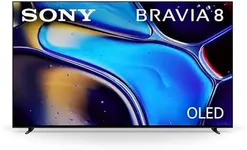

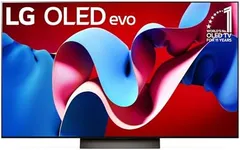




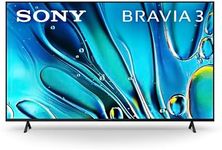


![SAMSUNG 55-Inch OLED HDR+ AI powered 4K S90D Series, 144 Hz refresh rate, Object Tracking Sound Lite, LaserSlim design, Q-Symphony, Gaming Hub, Smart TV - [QN55S90DAFXZC] [Canada Version] (2024)](https://images-proxy.bestreviews.guide/5Py9K2OUnHbCzn3mG2huanz_B8g=/0x150/https://m.media-amazon.com/images/I/51-PiJpl37L._AC_CX679_.jpg)

